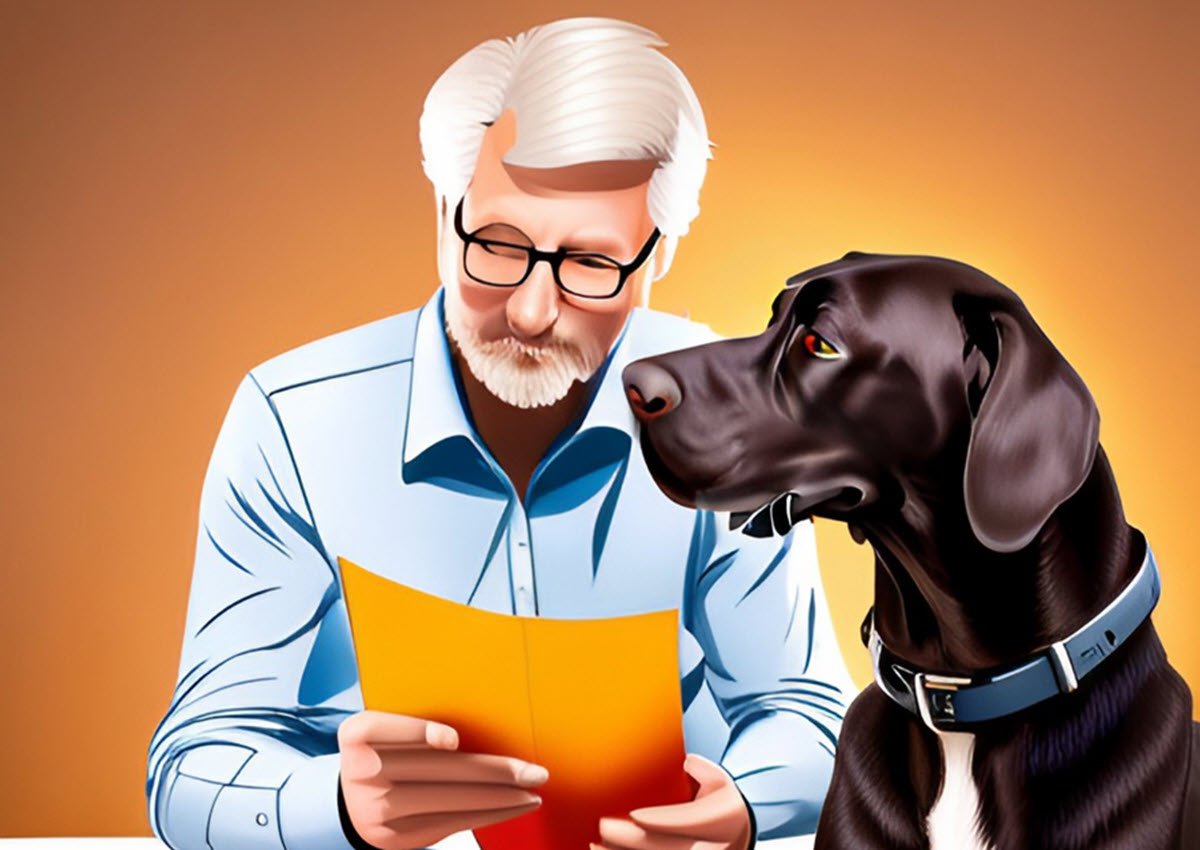Understanding the Impact of Dog Breeds on Home Insurance: A Closer Look at Misconceptions and Facts
Dogs are not just pets; they’re part of the family. However, when it comes to insuring your home, not all furry family members are viewed the same by insurance companies. Some breeds have a reputation that might make homeowners insurance providers think twice. While it’s true that some dog breeds are considered more of a risk due to their size, strength, or the lineage they come from, it’s essential to remember that with the right training and love, almost any dog can become a gentle and obedient companion. Let’s take a closer look at some of the dog breeds that often raise eyebrows at insurance companies and explore why they shouldn’t be dismissed based on breed alone.
Pit Bull Terriers
Pit Bull Terriers have a tough time when it comes to insurance policies, and often, they find themselves on the “do not insure” lists many companies use. This situation isn’t just a story of one bad apple spoiling the bunch; it’s a complex issue with many layers. Let’s dive into the reasons behind this insurance challenge for our Pit Bull Terrier friends.
First off, it’s important to understand that insurance companies operate on the basis of assessing risk. When deciding which breeds to cover, they look at statistics and historical data. Unfortunately for Pit Bull Terriers, they have been associated with a higher number of bite-related incidents compared to other breeds. This doesn’t mean all Pit Bulls are a risk, but insurance companies see the numbers and often make broad policy decisions based on this data.
Here are some excellent resources for dog owners –
Online Dog Training Course: https://bit.ly/ez-brain-train-dog
Dog Gut Health Supplement – Gut Health has a lot to do with brain training clarity: https://bit.ly/dogs-gut-health
Secondly, the media plays a considerable role. When dog bites or attacks are reported, Pit Bulls often make headlines, creating a perceived risk that may not match reality. These stories can influence public opinion and, by extension, the policies of insurance companies. It’s a cycle that’s tough to break and leaves this breed often misrepresented.
Additionally, there’s a legislative aspect to consider. Some areas have breed-specific legislation (BSL), which directly affects which breeds are more challenging to insure. If a city or state has laws restricting or outright banning Pit Bull Terriers, insurance companies may align their policies to reflect these legal standings.
It’s also about the potential cost of claims. Insurance companies weigh the financial impact of insuring certain breeds against the likelihood of paying out claims for dog bites or related incidents. High-profile breeds with reputations—deserved or not—for aggressive behavior might lead to larger or more frequent insurance claims, influencing a company’s list of insurable breeds.
However, it’s crucial to mention that not all companies have these restrictions, and some are moving away from breed-specific policies. Advocacy and education about Pit Bull Terriers and other frequently discriminated breeds are making strides in changing perceptions. Responsible ownership, training, and socialization play significant roles in proving that these dogs can be just as safe and loving as any other breed. Changing the narrative around Pit Bull Terriers involves highlighting the positive stories and the inherent goodness in every dog, regardless of breed.
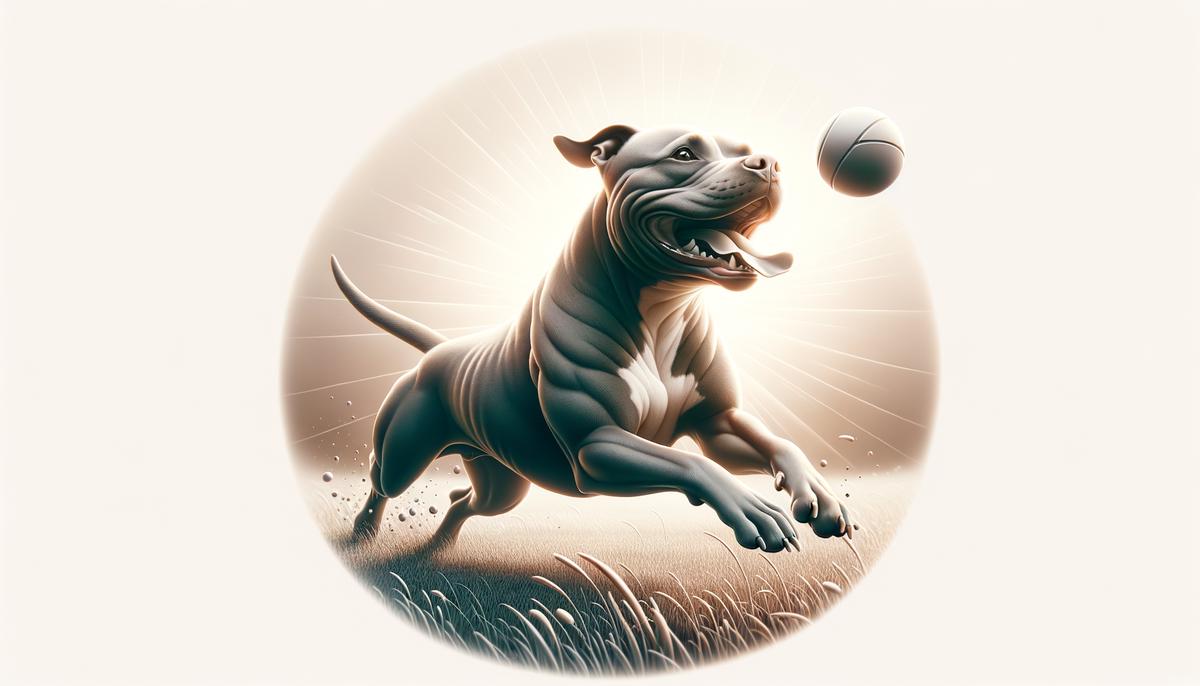
Rottweilers
Rottweilers, with their strong build and powerful presence, often catch the eye of insurance companies, but not always for reasons one might wish. This breed is known for its loyalty and protective nature, traits that make them excellent companions. However, these very characteristics raise concerns for insurers. Here’s why Rottweilers find themselves under the insurance microscope:
Historically, Rottweilers are counted among breeds with a higher likelihood of displaying aggression under certain circumstances, especially if not properly trained or socialized. Their formidable strength and size mean that any incident involving a Rottweiler could potentially lead to serious injuries. Insurers deal in risk management, and a breed with a statistical predisposition for causing more severe accidents becomes a focal point.
The perception of Rottweilers as intimidating dogs isn’t helped by their depiction in popular culture. Often portrayed as the quintessential guard dog or associated with aggressive behaviors, these portrayals can skew public opinion and, by extension, influence the considerations of insurance companies. The narrative surrounding Rottweilers, much like Pit Bulls, is complex and filled with both admiration and apprehension.
Here are some excellent resources for dog owners –
Online Dog Training Course: https://bit.ly/ez-brain-train-dog
Dog Gut Health Supplement – Gut Health has a lot to do with brain training clarity: https://bit.ly/dogs-gut-health
From a purely financial perspective, insurance companies are wary of the costs associated with dog bite claims. Given their size and strength, incidents involving Rottweilers can lead to higher medical expenses, legal fees, and settlements. This economic factor plays a significant role in why insurers might be cautious about covering households with Rottweilers. The potential for financial loss is a powerful motivator in policy decisions.
Interestingly, the conversation around Rottweilers and insurance is evolving. As with Pit Bulls, there is a growing recognition of the importance of evaluating dogs on an individual basis rather than by breed alone. Factors like an individual dog’s history, behavior, and the owner’s commitment to training and socialization are increasingly being considered. This shift reflects a broader awareness of the role responsible pet ownership plays in preventing accidents and promoting a positive image of the breed.
For Rottweiler owners, demonstrating that their pets are well-trained and sociable can make a significant difference. Participating in obedience training programs, passing the American Kennel Club’s Canine Good Citizen test, and engaging in community activities can showcase the amicable side of Rottweilers. It’s about building a case for the dog as an individual, one that contrasts with the generalized assumptions.
This ongoing dialogue between Rottweiler enthusiasts, the public, and insurance companies suggests a road to a more nuanced understanding. It’s an acknowledgment that while statistics and historical data inform policy decisions, the narrative isn’t fixed. Change is possible through advocacy, education, and responsible ownership, shaping a future where Rottweilers are insured not just based on their breed, but on their behavior, training, and the bond they share with their human companions.
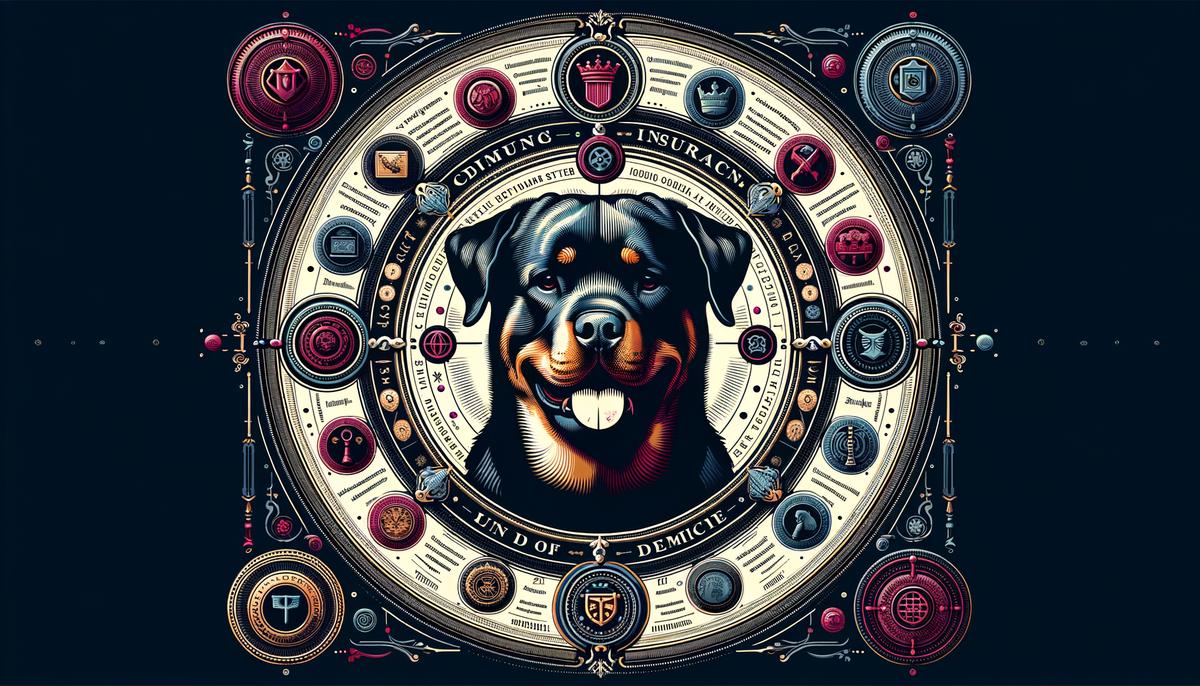
German Shepherds
When we turn our attention to German Shepherds, it’s important to look beyond the stereotypes and understand what makes them unique. Renowned for their intelligence, loyalty, and versatility, German Shepherds are not just Hollywood heroes. They serve as guide dogs, search-and-rescue workers, and faithful family pets. Yet when it comes to homeowners insurance, they sometimes get a bad rap. Why is that?
Firstly, let’s delve into why German Shepherds might be considered a risky breed by some insurance providers. Known for their protective nature, German Shepherds take their role as family guardians very seriously. This breed tends to be wary of strangers, which can occasionally lead to protective behaviors. However, it’s this same loyalty and protective instinct that endear them to so many.
Insurance companies are in the business of assessing risk. When they see a breed that is powerful and protective, they might flag it as a higher risk for incidents, despite not all German Shepherds fitting this bill. It’s a classic case of a few influencing the view of many. The reality is, any dog, regardless of breed, can exhibit aggressive behavior if not properly trained and socialized.
Here are some excellent resources for dog owners –
Online Dog Training Course: https://bit.ly/ez-brain-train-dog
Dog Gut Health Supplement – Gut Health has a lot to do with brain training clarity: https://bit.ly/dogs-gut-health
The good news is, perceptions are shifting. Much like how attitudes towards Pit Bulls and Rottweilers are evolving, so too is the understanding of German Shepherds. More and more, insurers are looking at individual behavior rather than just breed. This shift means that a well-behaved, sociable German Shepherd might not pose any issues for obtaining homeowners insurance.
Key to ensuring a positive reputation for German Shepherds is responsible ownership. Training and socialization from a young age can make all the difference. A German Shepherd that is accustomed to being around different people and environments is less likely to react negatively to unfamiliar situations. This not only creates a more well-rounded dog but also alleviates concerns from insurance providers.
Moreover, the community of German Shepherd owners plays a crucial role in reshaping the narrative. By showcasing the positive attributes of their dogs, from obedience to their role in assisting and protecting, they highlight the breed’s capacity for good.
In conclusion, while German Shepherds can be seen as risky by some insurance companies, it doesn’t have to be the norm. Through responsible pet ownership, training, and socialization, the narrative around these loyal, intelligent dogs continues to evolve. As perceptions shift, the hope is that more insurance companies will assess dogs like German Shepherds based on their individual behavior rather than breed alone. This would mark a significant move towards a more inclusive approach to homeowners insurance where German Shepherds are concerned, acknowledging the profound bond between these distinguished dogs and their human families.

Doberman Pinschers
Why Do Doberman Pinschers Make Insurance Companies Nervous?
Doberman Pinschers, with their sleek coat, athletic build, and regal stance, often turn heads wherever they go. However, these same attributes that make them so admired also contribute to the apprehension they cause among insurance companies. Here’s a dive into why Dobermans might make insurance providers think twice.
- Perceived Aggressiveness: Dobermans are often perceived as aggressive due to their history as guard dogs. This reputation influences how insurance companies view them, considering them a higher risk for potential claims related to dog bites or attacks.
- Strong Physical Capabilities: Dobermans are incredibly strong and fast, capable of inflicting serious injuries if they decide to attack. Their physical prowess means that any incident could have more severe consequences, increasing potential claim costs for insurers.
- Protective Instincts: Born protectors, Dobermans are incredibly loyal to their families and can be wary of strangers. While this trait is admirable, it can lead to protective behaviors that insurers deem risky, fearing that the dog might bite or attack someone they perceive as a threat to their home or family.
- Training and Socialization Requirements: Proper training and socialization are essential for Dobermans. However, insurance companies are concerned that not all owners take this responsibility seriously. A lack of training could lead to unpredictable behavior, making insurance companies nervous about the possibility of incidents.
- Higher Liability Payouts: The size and strength of Dobermans mean that any attack could lead to more significant injuries, resulting in higher medical costs. This potential for expensive claims makes insurance companies uneasy about covering homes with Dobermans.
- Breed Legislation and Restrictions: In some areas, Dobermans are classified under breed-specific legislation, which can complicate insurance policies. These regulations often stem from the breed’s perceived aggressiveness, influencing insurers to either hike up premiums or exclude coverage for Dobermans entirely.
Despite these concerns, it’s crucial to understand that each Doberman is an individual, and many are loving, well-trained members of the family. Advocacy, responsible ownership, and showcasing the positive side of Dobermans can help to slowly change the narrative. Owners can demonstrate their commitment to training, socialization, and overall responsible pet ownership to help mitigate insurance companies’ fears. By building a portfolio of positive interactions and proof of obedience training, Doberman owners can argue for fair treatment from insurance providers, emphasizing the dog’s behavior and personality over the breed’s reputation.

Wolf Hybrids
When it comes to insuring Wolf Hybrids, insurance companies have a specific set of concerns that go beyond those associated with more commonly owned dog breeds. Here’s a look at some of these anxieties:
A Step into the Wild: Wolf Hybrids carry genetic traits from their wild ancestors, which can make their behavior unpredictable. Despite the best training, a Wolf Hybrid might react in a manner that’s instinctual to their wild side, which can be a red flag for insurers worried about liability.
Understanding the Hybrid: The term “wolf hybrid” itself can be a concern because it implies a blend of domestic dog and wild wolf. This mix often results in animals that may look domestic but retain the unpredictable characteristics of a wild animal, making them a complex challenge for owners and insurers.
Legality and Regulations: In some places, owning a Wolf Hybrid is either illegal or comes with strict regulations. Insurance companies are wary of covering pets that could attract legal issues, making Wolf Hybrids a higher risk in areas with stringent pet ownership laws.
The Power of Perception: Just as media and public opinion have influenced perceptions of other breeds, the portrayal of Wolf Hybrids is also a concern. Often depicted as wild and dangerous, these animals can be prematurely judged as high risks by insurance companies, based on societal fears rather than individual behavior.
Proving Trainability and Temperament: Unlike some dog breeds with well-documented traits for trainability and temperament, Wolf Hybrids often face skepticism over their ability to adapt to domestic life. Insurance companies might be hesitant to cover animals that are perceived as difficult to train or potentially aggressive.
Potential for Damage: Given their size, strength, and natural behaviors, Wolf Hybrids can cause higher levels of property damage, whether through play, stress behaviors, or lack of adequate space. This potential for damage can raise red flags for insurers calculating risk and potential claim costs.
Building a Case for Coverage: For owners of Wolf Hybrids, proving their pet is an exception may involve extensive documentation, including obedience training certification, letters from veterinarians about the pet’s health and temperament, and possibly even behavioral assessments from animal behaviorists.
The Push for Change: As with other breeds, advocacy and education play significant roles in changing insurance companies’ perspectives on Wolf Hybrids. By emphasizing responsible ownership, proper training, and the individual assessment of animals, there’s hope for future policies that reflect a more nuanced understanding of Wolf Hybrids.
In navigating the complexities of insuring Wolf Hybrids, the conversation continues to evolve. Both insurance providers and pet owners seek common ground in addressing liability concerns while acknowledging the capabilities of these unique animals to be loving and loyal companions, when given the proper environment and care.

Alaskan Malamutes
Turning to Alaskan Malamutes, these majestic snow beasts carry a unique blend of characteristics that set them apart, not just in their looks but also in how insurance companies view them. Alaskan Malamutes, with their wolf-like appearance, instantly command attention. However, their size and strength also bring insurance challenges. Originally bred for hauling heavy freight because of their endurance and strength, Malamutes are among the most robust dog breeds. This physical prowess, while admirable, is precisely what makes insurers cautious.
Their vigorous nature means they require ample exercise and space to explore, conditions that not all pet owners can consistently provide. Without an appropriate outlet for their energy, Malamutes can become bored and potentially destructive. This factor alone can lead to claims from property damage, a headache no insurance company wants to amplify.
Here are some excellent resources for dog owners –
Online Dog Training Course: https://bit.ly/ez-brain-train-dog
Dog Gut Health Supplement – Gut Health has a lot to do with brain training clarity: https://bit.ly/dogs-gut-health
Furthermore, the Alaskan Malamute’s thick, double coat, built to withstand Arctic temperatures, often confuses the uninformed into underestimating their need for regular, vigorous exercise and mental stimulation even in warmer climes. This mismatch between the breed’s needs and an owner’s expectations can lead to behavioral issues, which in turn raise flags for insurers aware of the costs associated with rehabilitating or managing a dog with behavior problems.
A key consideration for insurers is the breed’s dominance and independent streak. Training and socialization need to be consistent, yet due to their independent nature, Malamutes might not always be keen on following commands, a trait that can translate to unpredictability in the eyes of insurers. Although they’re not known for being aggressive without cause, their size and potential to stand their ground in uncomfortable situations could lead to incidents that result in insurance claims.
Due to their sheer physical size, even playful behavior can inadvertently cause harm to small children or other pets, leading to potential liability claims. This issue of size and unanticipated strength use is a concern that insurance companies can’t overlook, as the cost of medical bills or legal action following an incident can be significant.
In essence, while the Alaskan Malamute is a loyal, affectionate, and capable breed, their characteristics align in such a way that insurance companies often deem them high-risk. This stance is less about the dogs themselves and more about mitigating potential financial losses arising from claims, a balancing act insurers are perpetually engaged in. And while every Malamute is an individual, the overarching traits of the breed inform the cautious approach many insurers take. However, it’s through continuing education, responsible ownership, and showcasing the positive aspects of the breed that perceptions can gradually shift towards a more favorable view.
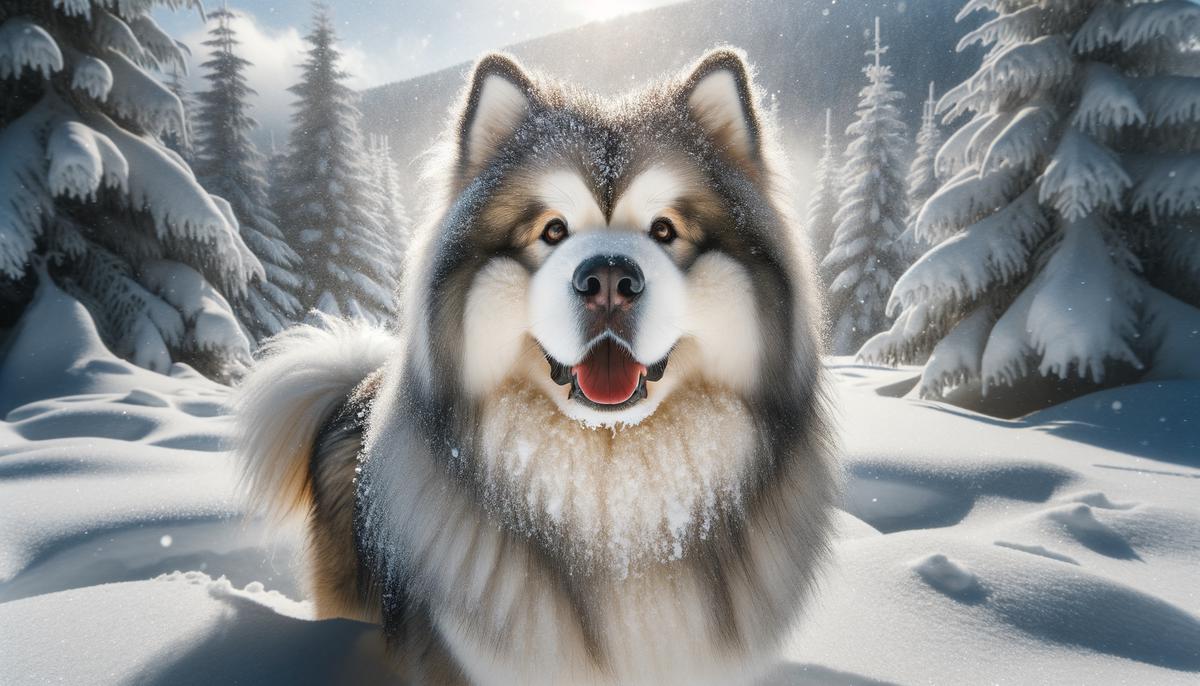
Siberian Huskies
Siberian Huskies, known for their stunning blue eyes and wolf-like appearance, capture the hearts of many. Yet, they often find themselves on the “do not insure” lists of many insurance companies, and here’s a deeper look into why that might be the case, even though they are as enchanting as they are.
First off, Siberian Huskies are a high-energy breed, renowned for their endurance and desire to run. While this trait makes them excellent companions for active individuals or families, it also poses a challenge for those not prepared for the level of activity these dogs require. Without sufficient exercise, Huskies can become bored and exhibit destructive behavior, a liability concern for insurers.
Their strong prey drive is another factor. Originally bred to pull sleds and hunt in the harsh conditions of Siberia, they have retained their keen instinct for the chase. This can lead to situations where smaller animals or even neighborhood pets might be at risk, increasing the likelihood of claims filed against their owners.
Huskies also have a reputation for being escape artists, able to dig under or jump over fences in pursuit of adventure. This proclivity raises concerns about their manageability and the potential for accidents or damage outside the confines of their home, making insurers wary.
Despite their friendly and approachable demeanor, Siberian Huskies possess an independent streak, which can make training a challenge for inexperienced owners. Insurance companies often consider the training and socialization of a dog in their policies, and a breed known for its stubbornness can be seen as a higher risk.
Furthermore, their vocal nature—howling and talking—although endearing to some, can lead to noise complaints, putting owners at risk of personal liability issues. This characteristic, while not directly related to insurance risks like bites or property damage, can still contribute to the breed being viewed unfavorably by insurers.
It’s worth noting that these characteristics don’t make Siberian Huskies ‘bad’ dogs. Many of the traits that can raise red flags for insurers also make them beloved companions. Their intelligence, loyalty, and playful nature can lead to a rewarding relationship with the right owner, committed to meeting their needs for exercise, training, and companionship.
Encouragingly, some insurance companies and organizations are starting to look beyond breed labels, considering the individual behavior of each dog instead. Through promoting responsible pet ownership, providing proper training, and understanding the unique traits of the Siberian Husky, owners can help shift perceptions and ensure their furry family members are not unjustly penalized.
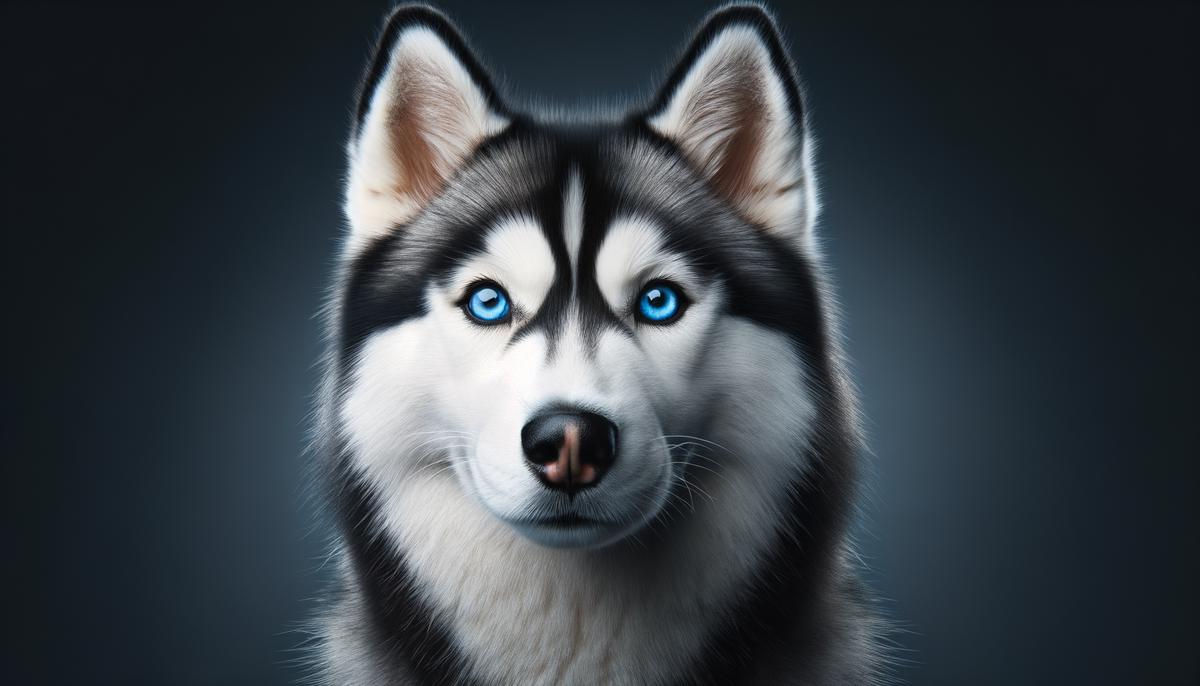
Great Danes
Great Danes, those gentle giants with their majestic stature and soulful eyes, face their own unique challenges when it comes to insurance coverage. Let’s dive into understanding why these towering companions often find themselves facing hesitancy from insurance companies, despite their typically friendly nature.
Height and Weight: Great Danes are among the largest breeds, with males standing up to 32 inches tall at the shoulder and both genders weighing anywhere from 140 to 175 pounds or more. Their size alone can make insurers pause, worrying about potential injuries or accidents simply due to the dog’s massive build.
Life Span and Health Issues: These beautiful creatures have a heart as big as their frame, but unfortunately, their health can be as fragile as their boundless love. With a relatively short lifespan averaging around 7 to 10 years, Great Danes are prone to a variety of genetic health issues. From heart conditions like dilated cardiomyopathy to joint problems such as hip dysplasia, the potential for medical claims is high. Insurance companies, always looking at the bottom line, may see these lovable dogs as a walking vet bill.
Perception of Danger: Despite their gentle disposition, the sheer size of Great Danes can be intimidating to those unfamiliar with the breed. This intimidation factor can lead to a higher perceived risk of bites or attacks, even if unfounded. Unfortunately, this perception can influence an insurance company’s willingness to cover a home with a Great Dane.
Property Damage: Their size and strength also mean that Great Danes can unintentionally cause more damage to property compared to smaller dogs. Whether it’s knocking over a vase with a wag of their tail or accidentally breaking a fence while playing, their potency for accidental damage is high. For insurers, this translates into a risk for higher claims for property damage.
Despite these factors, it’s important to remember that Great Danes, like any breed, are individuals with their own personalities and behaviors. Many of these gentle giants are loving family members who would never intentionally harm a fly. Advocacy, education about the breed, and demonstrating through training and socialization that your Great Dane is well-behaved can help change perceptions. By addressing the concerns of insurance companies head-on and showing that your Dane is not a statistic, you can help pave the way for broader acceptance and coverage for these affectionate pets. Responsible ownership is key, showcasing that these noble canines can be just as safe and loving as their smaller counterparts.
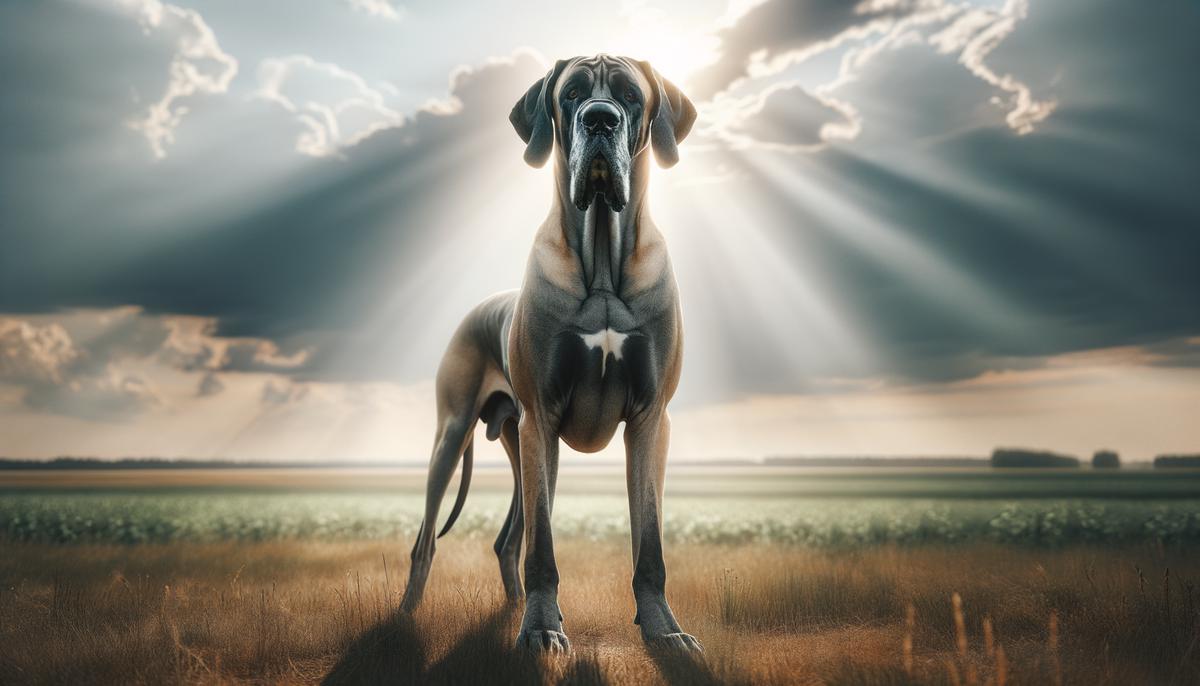
Chow Chows
Now, let’s talk about Chow Chows and the challenges they face in securing insurance coverage. Known for their distinctive lion-like mane and stoic expression, Chow Chows are an ancient breed that captivates the hearts of many pet owners. However, their beauty and loyalty often come with a set of insurance hurdles. Let’s break down the reasons behind their often uninsurable status:
Chow Chows possess a unique temperament, blending independence with aloofness towards strangers. This reserved nature can sometimes be misinterpreted as aggression, making insurance companies cautious. Unlike more outwardly friendly breeds, Chow Chows may not warm up to unfamiliar people quickly, which can lead to elevated risk assessments by insurers worried about potential bite incidents.
Historically, Chow Chows were bred for various purposes, including hunting, guarding, and even pulling. These roles required a dog with a strong and protective demeanor, traits that persist to this day. This protective instinct, while valuable in a family guardian, raises red flags for insurers who prioritize minimizing risk and avoiding claims stemming from protective behaviors gone awry.
Another factor is the Chow Chow’s impressive strength and powerful build. Their solid frame and considerable muscle mass mean that if they decide to leap or pull, they can inadvertently cause injuries or damage property. The potential for physical harm, whether to people or property, places them in a higher risk category from an insurance perspective.
Additionally, the perception of Chow Chows in popular culture and media hasn’t always helped their case. Often depicted as noble yet potentially fierce animals, these portrayals can influence public opinion and, by extension, the decisions made by insurance companies.
The breed-specific legislation (BSL) affecting Chow Chows in some areas further complicates the insurance issue. Regions with BSL may have laws that restrict or regulate the ownership of Chow Chows, making it even more challenging for owners to secure insurance.
Despite these hurdles, Chow Chow enthusiasts and responsible owners know that with proper training, socialization, and understanding, Chow Chows can be loving, loyal companions. They argue that insurance should not solely be based on breed but should consider the individual dog’s history and behavior.
In response, some insurance companies and advocates are pushing for a more nuanced approach to pet insurance, one that assesses the individual dog rather than making blanket judgments based on breed. This movement towards individual assessment reflects a growing recognition that responsible ownership and the environment a dog is raised in play significant roles in shaping behavior.
Chow Chows, with their majestic appearance and complex characters, remind us of the importance of looking beyond stereotypes and advocating for fair treatment based on individual merit, not breed reputation. As the conversation around pet insurance evolves, there is hope that these beautiful dogs will find it easier to be insured, reflecting a broader understanding of what risk assessment should entail in the world of pet ownership.

Akitas
Now, turning our attention to Akitas, these majestic dogs bear a striking presence coupled with a rich history that’s deeply rooted in Japanese culture. Known for their loyalty and courage, Akitas have served as symbols of good health, happiness, and longevity. However, when it comes to insurance coverage, Akitas frequently face challenges.
One of the primary reasons Akitas are often refused insurance coverage revolves around their strong protective instincts. These dogs are incredibly loyal to their families, a trait that, while admirable, can sometimes lead to protective behaviors that insurance companies find risky. Their natural inclination to guard and protect can be misinterpreted as aggression, especially if not properly managed through training and socialization.
Another factor is the Akita’s sheer size and strength. Akitas are large, powerful dogs, capable of inflicting significant damage in the rare events of bites or attacks. Insurance companies assess risk based on potential for harm, and unfortunately, Akitas fall into a category deemed higher risk simply due to their physical capabilities.
Furthermore, Akitas are known for their reserved and independent nature. While they can form deep bonds with their families, their aloofness with strangers and strong will can be seen as liabilities. Without consistent, positive training and socialization from a young age, Akitas may display behaviors that are challenging to manage, increasing the likelihood of incidents that could lead to insurance claims.
There’s also the aspect of breed-specific legislation and regulations, which can directly impact an insurance company’s policy on covering certain dog breeds, including Akitas. In areas where Akitas are subject to restrictions, insurance providers may be less willing to offer coverage due to the perceived increased risk set forth by local laws.
Despite these challenges, Akita owners and enthusiasts argue for the importance of evaluating dogs on an individual basis rather than by breed alone. They emphasize responsible ownership, which includes proper training, socialization, and healthcare, as key factors in preventing incidents that might lead to insurance claims. Highlighting the positive aspects of Akitas, such as their loyalty, intelligence, and role as faithful companions, can help shift perceptions and promote a more inclusive approach to insurance coverage.
In conclusion, the road to changing insurance policies for Akitas may be paved with education, advocacy, and demonstrating the positive outcomes of responsible pet ownership. By working together, owners, breed organizations, and insurance companies can find common ground, ensuring that Akitas receive the fair treatment and coverage they deserve.

Remember, every dog is an individual, and their behavior is influenced far more by their upbringing and training than by their breed alone. While certain breeds might require extra effort in training and socialization, the rewards of having a loyal, loving companion are immeasurable. Before making any decisions based on breed alone, consider the individual dog and the commitment you’re willing to make to ensure they’re a safe, happy, and well-behaved member of your community. By doing so, we can start to change perceptions and show that, with the right care and training, all dogs can be the perfect addition to any loving home.

